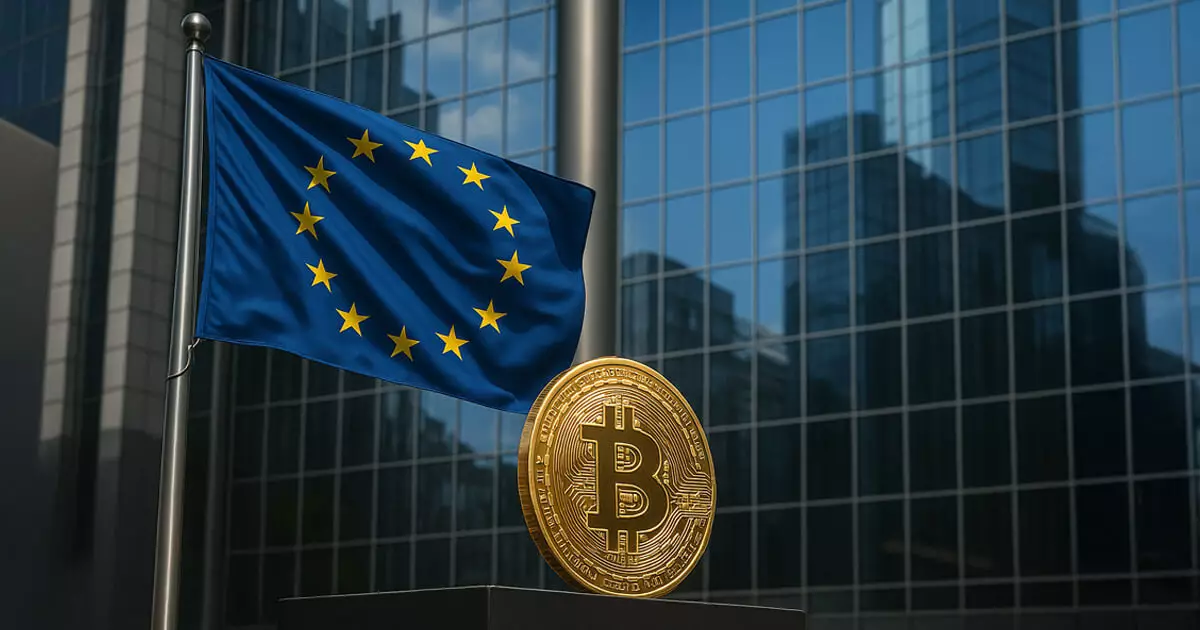The introduction of the Markets in Crypto Assets Regulation (MiCA) by European authorities stands as a crucial turning point in the realm of cryptocurrency. Ostensibly, these regulations aim to offer a framework that protects consumers and fosters trust. However, a closer examination reveals that the stringent requirements imposed may inadvertently stifle innovation. This tension between safeguarding investors and nurturing a vibrant market is not merely an administrative quagmire; it’s a battle for the very soul of the crypto ecosystem in Europe.
Historically, the landscape of crypto has thrived on a foundation of minimal oversight, allowing nimble startups to disrupt established financial norms. Yet, the rigid structure of MiCA appears beckoning for larger corporations, potentially sidelining the very inventors who embody the spirit of decentralized finance. Is it wise to endorse legislation that could ostensibly protect what it purports to preserve? The paradox is troubling: the creators of tomorrow’s technologies risk being pushed out by the compliance costs and legal labyrinths that decorate MiCA.
Investor Protection vs. Market Dynamics
Proponents of MiCA often herald its potential for increasing investor protection and transparency. These benefits are essential in a field riddled with scams and market manipulation. Yet, one cannot ignore the looming specter of market centralization that the regulation may breed. Larger established firms—those that are more likely to absorb the financial shocks of compliance—will have an amplified advantage over startup competitors. When innovation becomes a function of how much capital a company possesses to navigate regulatory frameworks, we risk culminating in a corporate monopolization of crypto.
This transformation isn’t merely a theoretical debate; it presents immediate risks to market diversity. Startups face substantial barriers to entry that could turn the European crypto scene into a club accessible only to well-funded entities. Consequently, not only will this shrink avenues for new ideas, but it may also lead existing innovative projects to abandon Europe for jurisdictions with supportive environments—effectively exporting creativity to more lenient territories.
The Regulatory Burden of Decentralized Finance
One glaring absence in MiCA is its inadequate address of decentralized finance (DeFi), often regarded as the most transformative aspect of the crypto era. While centralized exchanges and custodians can find a way to adapt to regulations, the decentralized applications that form the backbone of DeFi face an uncertain future. Ignoring this sector deprives MiCA of comprehensiveness. The ambiguity surrounding regulatory compliance could stymie innovation in this critical area. Market players may find themselves dealing with a regulatory limbo that can destabilize their operations.
Instead of leaning into the decentralized narrative that cryptocurrencies were built upon, MiCA treads cautiously, suppressing the energy that DeFi brings to the table. The potential for innovation is colossal, yet imposing state-driven regulations can only hamper the very principles that set blockchain apart—autonomy, decentralization, and widespread accessibility. If Europe does not rise to meet these new demands, it runs the risk of falling behind its global counterparts who better embrace the ethos of disruption.
Compliance Costs: The Innovators’ Dilemma
Navigating the intricacies of MiCA won’t come cheap. Small and medium enterprises (SMEs), often the breeding grounds for groundbreaking ideas, will face daunting compliance costs, placing them at a significant disadvantage. The legal complexities they must navigate could drain resources more efficiently than a competitor in a brutal marketplace. While the aim might be to level the playing field, the regulations create an unintentional landscape where only the strongest, or perhaps the wealthiest, can survive.
This concern brings alarming implications for consumer choice. When fewer innovative projects can compete, the possibilities for users dwindle. A rich variety of services has been the hallmark of cryptocurrency’s rapid evolution, which, when compromised, leads to a stagnant marketplace where the same few players dominate. And, as competition wanes, so too does the motivation to innovate, leaving consumers at the mercy of whatever offerings those larger companies decide to provide.
Balancing Act: Regulation and Innovation
The MiCA regulation serves as both an opportunity and a challenge for the European market. Indeed, it carries the potential to instill trust in the crypto sector, thereby attracting more investors. But as stakeholders engage with this new framework, they must weigh the consequences of overregulation. While the narrative surrounding investor protection is undoubtedly compelling, one must ask: at what cost?
Further exploration into creating a balanced regulatory environment could ensure that Europe remains a competitive player in the global crypto landscape. Policymakers must embrace a collaborative approach that maintains rigorous standards without suppressing the innovation that is essential for the growth of a healthy crypto ecosystem. By choosing to support creativity and competition while ensuring accountability, Europe could emerge as a leader rather than a follower in the cryptocurrency revolution.

